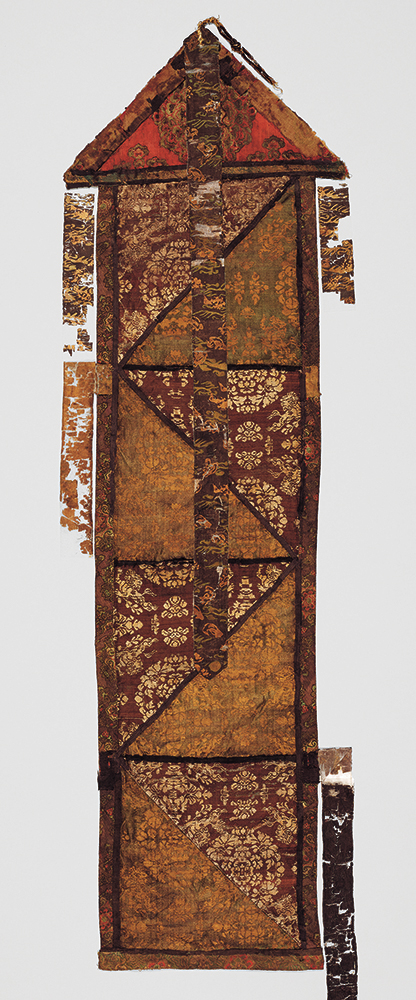幡(ばん)ban
古代インドの軍旗に起源があると言われる旗で、仏教に取り入れられて教団の標幟(ひょうじ)、荘厳具(しょうごんぐ)として寺院の庭や堂宇の柱などにかけられた。三角形の幡頭(ばんとう)に長い幡身(ばんしん)を下げ、下方に帯状の幡脚(ばんきゃく)を垂下する形式が一般的で、金属製、布帛(ふはく)製、玉製などがある。
第76回 正倉院展、2024年
Ban
A Buddhist banner, generally with a triangular “head” (banto), an elongated “body” (banshin) made up of “fields” (tsubo), a “tongue” (zetsu), “arms” (banshu), and dangling “legs” (bankyaku). Ban were hung freely suspended from above, both inside the worship hall and outside around the temple grounds. They functioned as decorations for rituals. In the Repository, there are textile banners, metal banners, and banners composed of strings of beads.
74th Annual Exhibition of Shōsō-in Treasures, 2022

錦道場幡 第127号櫃 第33号(南倉185)
Buddhist Banner for a Ceremonial Space (South Section 185)
Buddhist Banner for a Ceremonial Space (South Section 185)


